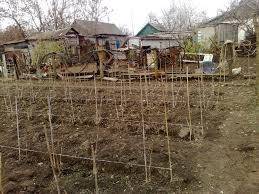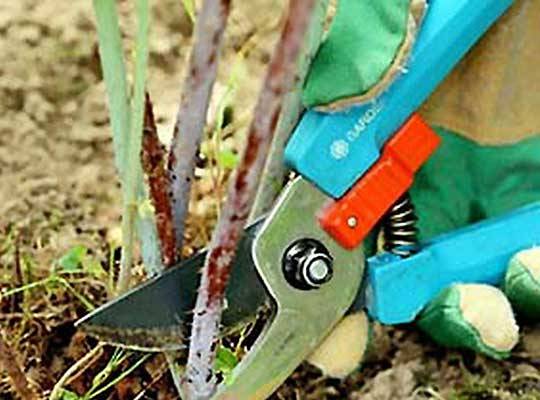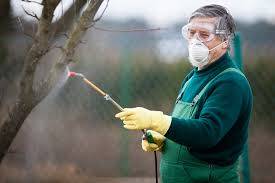Content
Raspberry is a plant from the pink family, known to man since ancient times. This extremely tasty, aromatic berry is also a treasure trove of vitamins, minerals and amino acids.
In general, raspberries are not a particularly whimsical plant, but in order to get a good harvest of large and juicy berries, the gardener needs to take care of the raspberry.
The responsible stage is spring care for raspberries... How to protect a plant from pests in spring, how to care for raspberries in spring and prepare it for flowering and fruiting is described in this article.
The beginning of spring work in the raspberry field
The first steps of a caring gardener in a raspberry patch are harvesting last year's leaves and branches. This stage is carried out as soon as the last snow melts. The importance of spring harvesting is due to the danger of plant infection - it is in the litter of last year's foliage that the main enemies of raspberries winter. Since they crawl out of wintering places from the very end of the winter cold, it is important not to miss the moment of spring cleaning.
All collected raspberry leaves and branches must be burned, since there is a high probability of their damage by fungi, diseases, viruses.
How to plant and replant raspberries in spring
Spring raspberry care includes planting work. When performing these works, according to experienced gardeners, three factors are important:
- Choice raspberry varieties... Among the numerous (more than six hundred) varieties of raspberries, it is important to choose the one that most fully corresponds to the climatic conditions where the raspberry is located.
- Choosing a place. When choosing a place for a future raspberry tree, experienced gardeners are advised to take into account that this plant does not like direct sunlight and does not tolerate drafts well. Moist loamy and sandy loam soils are favorable for raspberries.
- Soil preparation. Raspberry care involves the introduction of mineral and organic fertilizers, as well as watering.
When caring for raspberries in the spring, when planting seedlings, it is necessary to prepare pits (about 40 cm in diameter and in depth). The fertile layer must be set aside and mixed with fertilizers. Experienced gardeners recommend this mixture:
- Compost or humus - 10 gr.
- Potassium sulfate - 50 gr.
- Wood ash - 400 gr.
- Granular superphosphate - 100 gr.
These proportions of the necessary fertilizers are given per hole.
Experienced gardeners advise mixing the top layer of soil with fertilizers and pouring some into the hole, placing a raspberry seedling there a little below the bud and sprinkling it with prepared soil. Then a hole is made around and filled with water. After absorbing moisture, the hole is filled with humus or sawdust, and the raspberry seedling is cut to a height of 30 cm. If the rain has not passed, then after a few days the planting of the raspberry tree needs watering.
How to prune raspberries correctly
One of the most important steps in spring raspberry care is plant pruning.
Experienced gardeners find the double pruning method to be the most effective - it can significantly increase the yield of raspberries.
Double pruning of raspberries is done in two steps:
- Removal of weak, diseased shoots that have not survived the winter, pruning on living stems is done to a healthy bud.This must be done before the soil warms up - in March-April.
- Pruning 20 cm from the top of the raspberry shoot, after the buds have blossomed.
According to the advice of seasoned gardeners for caring for raspberries in the spring, the appearance of up to fifteen new shoots is stimulated, which give a good harvest.
Raspberry garter
Raspberry care in spring necessarily includes garter of raspberry shoots... Depending on the characteristics of the raspberry tree and the method of planting, you can choose one of two options for the raspberry garter.
- Artisanal - a stake is set in the middle of the raspberry bush and shoots are attached to it. The method is convenient for pit planting. Stakes can be driven in between bushes and tied shoots from different bushes and at different heights - this provides a more even hit of sunlight.
- Tapestry - along the edges of a row of raspberries, posts are installed, two rows of wire are pulled between them. One is at a height of about 70 cm, the second is at a height of one meter. Well suited for trench planting.
How to cultivate the soil
Proper care of raspberries in spring involves tillage.
Proper soil cultivation involves loosening (up to 10 cm deep), after which abundant watering is desirable.
Experienced gardeners believe that an element of spring care for raspberries, such as soil mulching, significantly contributes to an increase in yield. The procedure consists in introducing a deep layer of humus, compost, rotted straw - the so-called mulch into the raspberry tree. Fifteen centimeters of mulch will provide the roots with nutrition and moisture.
How to feed the soil
Experienced gardeners believe that caring for raspberries in spring is impossible without fertilizing the soil.
Every year in the spring, it is necessary to apply nitrogen fertilizers to the soil of the raspberry plant. The time for the first feeding of raspberries is early spring, immediately after the snow melts, before loosening, but after watering. For fertilization, you can use ammonium nitrate plus a glass of wood ash (to prevent acidification) or potassium nitrate. A good option for spring care for raspberries can be a complex feeding:
- Potassium - 100 gr.
- Saltpeter - 100 gr.
- Superphosphate - 200 gr.
For 10 liters of water you need 100 grams. this mixture.
The next stage of spring feeding of raspberries is carried out in May - 500 gr. mullein dissolve in 10 liters. water.
Some experienced gardeners prefer to do exclusively with organic fertilizers. In addition to the mullein, they use the droppings of rabbits (diluted with water in a ratio of 1:10), poultry (1:20). Well fertilizes the ground of raspberry and herbal infusion of comfrey and nettle: for a week 1 kg of fresh herbs is infused in a bucket of cold water with daily stirring. For feeding raspberries, 1 liter is bred. infusion in 10 liters of water and pour 2 liters of the mixture under each bush.
Pest control
The first stage of the fight raspberry pests during the spring care of raspberries, spring cleaning takes place. As soon as the last snow melts, and the dead branches, last year's foliage are cut off, the branches should be collected and burned. It is there that the main enemies of raspberries winter and most of them can be destroyed in this way before they come out of hibernation.
The next stage of the fight is spraying the raspberry vine. It must be done before the kidneys open.
The beetle dies if the soil and raspberry shoots are treated with a nitrafen solution (200 ml per 10 l of water).
Fufanon or actellik are destructive for raspberry gall midge, especially its larvae (dose - 15 ml per 8 l of water).
For the stem fly, a layer of mulch on the raspberry tree circles is an obstacle to exiting hibernation.
The treatment of raspberry vines with solutions of agravertine, actellic or phytoverm has been repeatedly tested and confirmed by experience.
Experienced gardeners recommend that this part of spring care - processing work - be carried out on a cloudy day and only before flowering begins.
To combat raspberry pests, there are also quite effective folk remedies. If the raspberry is affected by gray rot, pine needles will protect it - it must be spread between the raspberry bushes. Fungal diseases of raspberry shoots are treated with garlic. Insecticides successfully replace infusions of onions, dandelions, and yarrow.
These tips will allow you to prepare the raspberry plant well for the fruiting period and enjoy a bountiful harvest of raspberries until the autumn cold.












